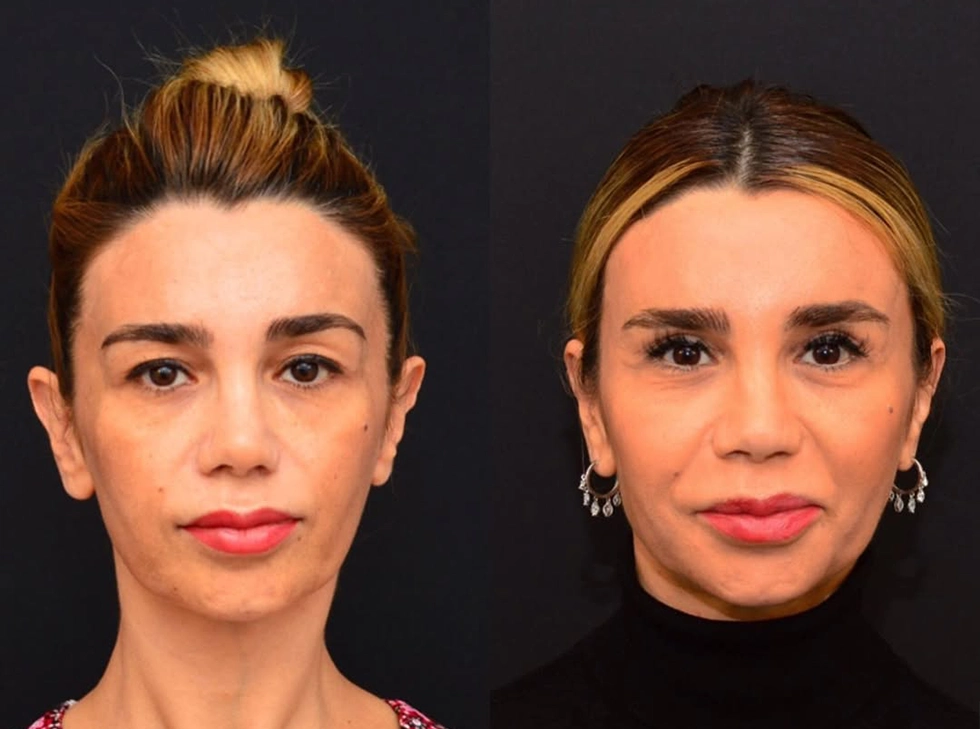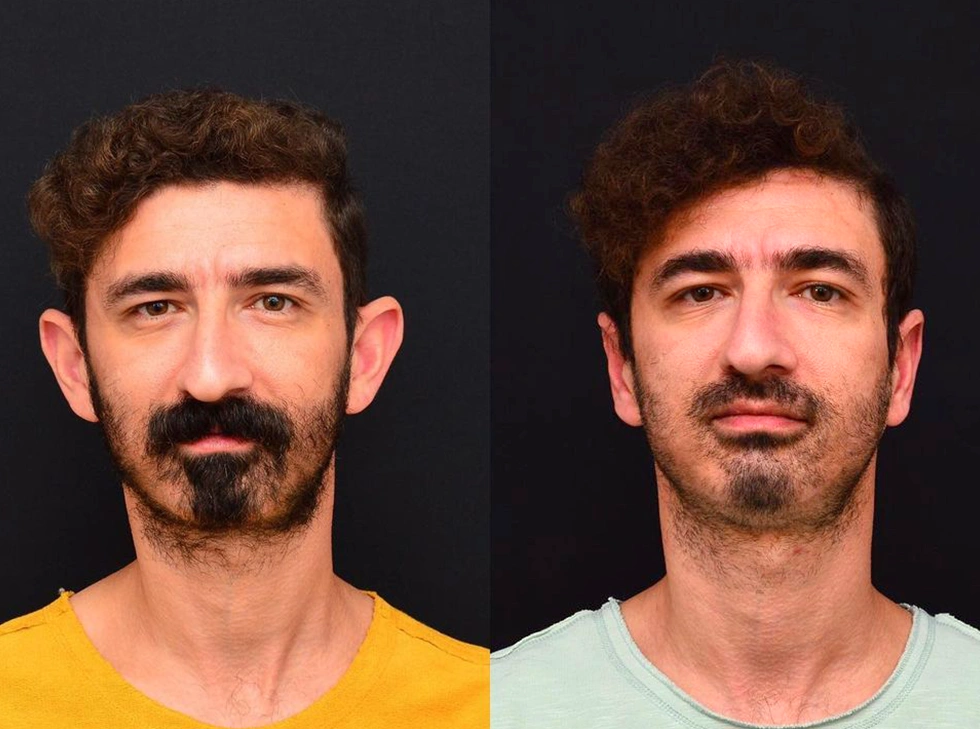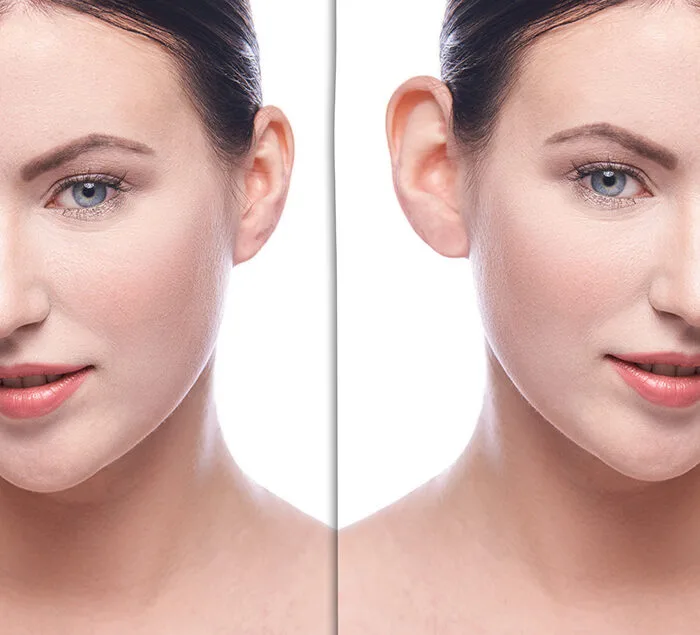Otoplasty in Turkey, especially with Prof. Dr. Murat Songu, offers an exceptional blend of surgical expertise and patient satisfaction. Recognized as one of the best surgeons in facial and ear aesthetics, Dr. Songu practices in one of the best clinics, drawing patients globally. Turkey stands out for its reasonable cost and price, making it a premier destination for cosmetic treatments abroad. Known as a best country for plastic surgery, it provides access to comprehensive patient care, including clear before and after pictures and authentic reviews, ensuring patients are well-informed and confident in their treatment journey.
| Purpose | To adjust the angle of the ears to be more proportional with the head and provide an aesthetic appearance. |
| Who Is Suitable | – Individuals with protruding ear deformity – Children over 5 years old and adults (those whose ear development is complete). |
| Types of Procedures | – Surgical Intervention (Otoplasty): Reshaping the ear cartilage and bringing it closer to the head. |
| Treatment Duration | Takes about 1 hour; usually discharged on the same day. |
| Type of Anesthesia | – General anesthesia in children |
| Procedure Process | 1. Examination and surgical planning 2. Application of anesthesia 3. Reshaping of ear cartilage and fixation with stitches 4. Support with bandages and healing process. |
| Recovery Process | – Mild pain and swelling may occur in the first few days – Bandages are removed within 1 week – Return to normal activities within 1-2 weeks. |
| Risks and Complications | – Infection – Bleeding – Mild asymmetry (rarely) – Cartilage slippage or weakness (rarely). |
| Advantages | – Permanent and aesthetic solution – Increases self-confidence – Provides a natural and balanced appearance. |
| Alternative Treatments | – Special ear bands in mild cases (can be used in children during the first 6 months after birth). |
| Care and Follow-up | – Following the doctor’s recommendations after surgery – Protecting the ear from trauma in the first few weeks – Regular check-up visits. |
Before & After Photos








Lorem ipsum dolor sit amet, consectetur adipiscing elit. Ut elit tellus, luctus nec ullamcorper mattis, pulvinar dapibus leo.
- Lingual braces are attached like
- Traditional metal braces but less noticeable
- Orthodontic appliances may also be a part
- Consist of clear trays that are changed out
What Is Otoplasty?
Otoplasty is a frequently utilized method. Also known as ear correction surgery, this procedure aims to alleviate individuals’ aesthetic concerns. By correcting the ears to be closer and more proportionate to the head, it allows individuals to express themselves better in social life.
How Is Otoplasty Performed?

Otoplasty is an aesthetic correction procedure. It begins with a consultation where the patient’s ear structure is thoroughly examined. The surgeon evaluates medical history and personal expectations at this stage. During the procedure, general anesthesia or sedation with local anesthesia is usually preferred for the patient’s comfort.
Incision Placement: To hide scars as much as possible, incisions are generally made behind the ears.
Cartilage Manipulation: The surgeon reshapes the cartilage structure to give the ears a more aesthetic appearance. This process involves folding, scoring, and removing parts of the cartilage when necessary.
Tissue Removal and Addition: Excess skin and cartilage are removed when needed, or cartilage grafts are added in cases requiring ear enlargement.
- Techniques like Mustardé or Furnas are frequently used at this stage.
After reshaping, the cartilage is secured with internal non-absorbable stitches. Skin incisions are closed with dissolvable stitches or ones that will be removed later to support the healing process.
Who Is Suitable for Otoplasty?
Otoplasty offers an ideal solution for individuals with aesthetic concerns. Children are suitable candidates because their ear structures are mostly developed and their cartilage remains flexible, making surgery effective. Early intervention in this age group can prevent psychological discomfort. Adults can benefit from this surgery to achieve facial symmetry and boost their self-confidence.
- Children over five years old whose ear structures have reached about 90% of adult size.
- Adults seeking to enhance facial symmetry and self-confidence.
Those with congenital ear deformities can achieve a natural ear appearance through this surgery. Individuals with ears folded forward or downward, small or misshapen ears, and those lacking natural folds are ideal candidates.
- Ears folded forward or downward.
- Sail-like ears without natural folds and shapes.
- Individuals with small or misshapen ears.
Patients dissatisfied with previous surgeries or who have experienced complications may opt for revision surgery to improve results. This group may undergo additional procedures to correct previous outcomes.
- Those unsatisfied with prior surgeries.
- Patients who developed complications post-surgery.
Lastly, individuals who have experienced trauma or children who face bullying due to their ears’ appearance can benefit from this surgery. Early intervention can enhance their quality of life and reduce negative impacts.
- Those who have experienced trauma.
- Children subjected to bullying.
What Techniques Are Used in Otoplasty?
Various techniques are employed in otoplasty. Mustardé sutures are used to accentuate the antihelical fold, allowing the ear to assume a more natural shape and effectively reduce protrusion. Often combined with other methods, the Furnas technique involves placing concha-mastoid sutures to bring the ear closer to the head, suitable for individuals with a deep ear concha.
- Stenström Technique: Achieves a natural antihelical fold by making scratches on the front surface of the cartilage, eliminating the need for permanent sutures.
- Cartilage-Sparing Techniques: Methods like the Chongchet technique reshape the ear using only sutures without cutting or scoring the cartilage.
- Conchal Reduction: Reduces a large conchal structure by removing cartilage, usually combined with suture techniques.
- Combined Techniques: Techniques like Mustardé-Furnas combine multiple methods to address various aspects of the ear, offering more consistent results.
How Should One Prepare Before Otoplasty?
Preparation for otoplasty is crucial for successful outcomes. Firstly, selecting the right surgeon experienced in otoplasty is essential. During the initial consultation, a thorough review of medical history is necessary.
Medical Evaluation and Consultation:
- Detailed examination of medical history, allergies, and any chronic conditions.
- Clarification of surgical goals and expectations.
- Clear explanation of surgical techniques and incision locations.
Secondly, adjusting medications and supplements before surgery is important.
Medications and Supplements:
- Discontinue medications and supplements that may increase bleeding risk two weeks prior to surgery.
- The surgeon may recommend antibiotics to reduce postoperative infection risk.
Thirdly, lifestyle adjustments can enhance surgical success.
Lifestyle Adjustments:
- Avoid nicotine products at least two weeks before surgery.
- Limit alcohol consumption to reduce bleeding risk and speed healing.
Lastly, pay attention to preoperative hygiene and care.
Preoperative Hygiene and Care:
- Wash hair on the morning of surgery or the night before without using hair products.
- Remove makeup, nail polish, and jewelry.
- Wear comfortable clothing with buttons or zippers to avoid disturbing the surgical area.
What Is the Recovery Process After Otoplasty?
Recovery after otoplasty requires careful attention. In the first week, meticulously applied bandages protect the ears and keep them in the correct position. Keeping these bandages dry and clean minimizes infection risk. Doctors typically prescribe pain relievers for mild to moderate discomfort in the initial days. Patients are also advised to use ice packs to reduce swelling and bruising.
Between the second and fourth weeks, patients can gradually return to normal activities. During this period, using headbands, especially while sleeping, is important to protect the ears.
From the third week onward, healing becomes more noticeable, and the ears begin to take their new shape. Minor swelling may be observed during the six to eight-week full recovery period. This is when patients start to see the final results. Complete healing and full manifestation of results can take up to a year.
How Long Does Otoplasty Take?
Otoplasty is a surgical procedure to correct ear structure. The surgery duration varies based on several factors but typically takes 1-2 hours. During the procedure, the surgeon makes incisions behind the ear, reshapes the cartilage, and secures the changes with stitches. The duration may extend or shorten depending on the patient’s condition and surgical requirements. Patients usually can go home on the day of surgery. Anesthesia methods include:
- Local anesthesia with sedation
- General anesthesia
These options are determined based on the patient’s age and health status.
What Are the Risks of Otoplasty?
Otoplasty carries various risks that can have significant consequences for the patient. Common postoperative complications include scarring, which is usually hidden behind the ears but may sometimes become noticeable.
Asymmetry may occur due to changes during the healing process, and existing asymmetry might not be fully corrected. Additionally, surgery can cause temporary changes in ear skin sensation; rarely, this may be permanent.
Other associated risks include:
Allergic Reactions:
- Allergic responses to surgical materials may develop.
Suture Issues:
- Sutures may surface through the skin, causing inflammation.
- Removal of such sutures may require additional surgery.
Overcorrection:
- May result in unnatural ear contours.
- Ears may appear too close to the head or oddly shaped.
General Surgical Risks:
- Allergic reactions or complications related to anesthesia.
- Risks of bleeding and infection.
Hematoma:
- Blood clots may form under the skin, requiring drainage.
Skin Necrosis:
- Disrupted blood flow during surgery can lead to skin tissue death.
Suture Complications:
- Issues may arise if sutures don’t dissolve properly or cause reactions.
Poor Healing:
- Smoking or underlying health conditions can negatively affect healing.
What Are the Differences Between Otoplasty and Other Ear Aesthetic Surgeries?
Otoplasty adjusts the ears closer to the head for individuals with aesthetic concerns. Compared to other ear aesthetic surgeries, the main differences are:
Otoplasty: Reshapes the ears and brings them closer to the head.
- Involves removing or reshaping cartilage.
- Incisions are made behind the ear.
Ear Augmentation: Aims to enlarge small or underdeveloped ears.
- Uses implants or the patient’s own cartilage.
- Reconstructs missing ear parts.
Ear Reduction (Macrotia Surgery): Reduces excessively large ears.
- Removes excess cartilage and skin for proportional ear size.
How Should Nutrition Be After Otoplasty?
Postoperative nutrition is crucial to support healing. Initially, consume light and low-fat foods to reduce potential stomach sensitivity from anesthesia and painkillers. Easily digestible foods are recommended for the first few days. Hydration is critical; drinking 8-10 glasses of water daily aids recovery. Avoiding alcohol is vital to prevent adverse interactions with anesthesia and medications.
Balanced Diet: Adopt a diet rich in nutrients that promote healing.
- Foods high in vitamin C support tissue repair.
- Lean proteins like meats, fish, and eggs aid tissue regeneration.
Avoid foods that may upset the stomach. Steering clear of alcohol, caffeine, and nicotine is important as they can negatively affect healing and increase complication risks.
When Can One Start Exercising After Otoplasty?
Resuming sports activities after otoplasty requires careful attention to recovery stages. The first week should focus on rest; all physical activity is discouraged. Tight bandages are used to protect the ears and ensure proper healing.
First Week Post-Surgery:
- Avoid all exercise.
- Prioritize rest.
In the second week, light activities like walking can be resumed to support blood circulation without overexertion.
Second Week Post-Surgery:
- Engage in light-paced walks.
- Avoid strenuous activities.
From the third week onward, low-impact exercises like light aerobics can begin. While these enhance endurance, care must be taken not to harm the surgical area.
Two to Four Weeks Post-Surgery:
- Start low-impact exercises.
- Activities like cycling and light aerobics are recommended.
After 12 weeks, moderate weightlifting and non-contact sports can be introduced as the body becomes ready for increased effort.
Full recovery and transitioning to more intense exercises depend on individual circumstances and the surgeon’s advice. Any pain or discomfort should prompt immediate cessation of activity.
When Are the Final Results of Otoplasty Visible?
The full results of otoplasty become apparent over several stages. Initially, patients’ ears are bandaged post-surgery to maintain the new shape and support healing.
- Immediate Postoperative Days: Swelling and bruising are common. Doctors may prescribe pain relievers to ease discomfort.
- First Week: Bandages and dressings are vital for proper healing. Sutures are typically checked during this period.
- Weeks Two to Four: Swelling continues to decrease, and the new ear shape becomes clearer.
- Weeks Four to Eight: Swelling and bruising significantly diminish, and ears nearly reach their final appearance.
- Months Three to Six: Surgical results stabilize, and ears are fully healed.
How Much Does Otoplasty Cost in Turkey ?
The cost of otoplasty (ear correction surgery) in Turkey varies depending on several factors, including the surgeon’s expertise, the clinic’s reputation, the complexity of the procedure, and any additional services included in the package. On average, you can expect the price to range from $2,500 to $3,500 USD.
Frequently Asked Questions
Will There Be Scars After Otoplasty?
Scarring may occur after otoplasty, but these scars are typically hidden behind the ear and within its folds. Therefore, they are almost invisible when viewed externally. Over time, postoperative scars fade and blend with the skin tone. The reduction of scars varies depending on skin type and the healing process. Proper care and surgical techniques can minimize scar visibility. Following an experienced surgeon’s guidelines will further reduce scar prominence. Ultimately, any scars left after otoplasty are negligible and improve over time.
Will the Ears Return to Their Original State After Otoplasty?
Post-surgery, the ears do not revert entirely to their original state. In the first few months, the ears may appear more pinned back than normal as they heal and reshape. By the end of the first month, a noticeable relaxation occurs, giving the ears a more natural appearance. However, this new look isn’t exactly like the original state. The surgery results in an aesthetic improvement rather than a complete return to the initial condition, indicating the procedure’s success.
Otoplasty carries some risks, as with any surgical intervention. Potential risks include infection and bleeding. Choosing an experienced surgeon significantly reduces such complications. Anesthesia-related risks should also be considered. Adhering to postoperative care instructions facilitates the healing process. Generally, the operation is considered low-risk and often yields successful outcomes.
- Consist of clear trays that are changed out
- Orthodontic appliances may also be a part
- Lingual braces are attached like
- Traditional metal braces but less noticeable
- Orthodontic appliances may also be a part
- Consist of clear trays that are changed out

